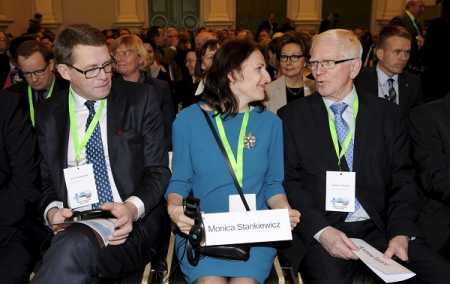Wed, 22 Jan, 2014 02:13:07 AM Researchers of 3 countries vow to cooperate to protect Gulf FTimes-STT Report, January 22  The President, Sauli Niinistö is speaking at the opining ceremony of the Gulf of Finland Year in Helsinki on Tuesday. Photo Lehtikuva. The researchers of three countries – Finland, Estonia and Russia – on Tuesday vowed to extend cooperation to protect the Gulf of Finland from pollution.
They gave the assurance while addressing the opening ceremony of the Gulf of Finland Year in Helsinki.
Speaking on the occasion, President Sauli Niinistö said although significant progress had been made to protect the Gulf of Finland, the situation was still far from satisfactory.

The opening ceremony of the Gulf of Finland Year in Helsinki on Tuesday. Photo Lehtikuva. “We need to do more and also know more about the sea ecosystem,” said the president, adding that more attention was needed for maritime transportation because the gulf had been increasingly threatened by oil and chemical transportation.
Minister of Environment Ville Niinistö said according to plans, the three countries would build an extensive observation network and obtain comparable information on the state of the sea through compatible measurements and methods.

The President, Sauli Niinistö and Minister of Environment, Ville Niinistö during the programme. Photo Lehtikuva. The researchers of Russia along with research vessel Aranda worked in the eastern Gulf of Finland and collected samples from several locations including the Russian side last week.
It was also noted that the oxygen situation in the Gulf of Finland was clearly better than what it was in beginning of last autumn and summer.
“The situation is quite good,” said marine biologist Juho Flinkman emphasising that many things needed be done to ensure healthy bay atmosphere.

The opening ceremony of the Gulf of Finland Year in Helsinki on Tuesday. Photo Lehtikuva. According to the Finnish environment institute Syke, oxygen levels improved as a result of strong western and southern winds during last autumn and early winter.
The levels of phosphate-phosphorus concentration is now close to levels measured in the 2000.
This, however, does not reflect a downward trend when compared against o several decades of accumulated data.
More News
|
|
Finland Times
| Thursday, 30 October, 2025 |

